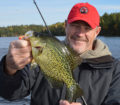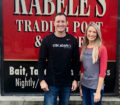By Steve Weisman
A couple of weeks ago, my weekly column analyzed the results of the Iowa DNR’s annual August roadside count. The bottom line: the northern part of the Hawkeye state’s pheasant forecast shows a positive hunting forecast.
The northwest, north central and west central sections of the state all averaged at or more than 30 birds per route. According to the data, the northwest region count of 29.84 birds was 6 percent better than 2020 and was the most since 2016. Meanwhile, the highest counting region was the north central at 31.81 birds, 34 percent higher than 2020 and the highest that region has seen in 14 years.
The west central section of the state reported 31.6 birds per route only slightly less than the north central region. The last time the west central region was over 30 birds per route was 16 years ago.
All three regions should offer good to excellent pheasant hunting, particularly around public and private lands with good winter habitat. Better counts in northwest came from Clay, Dickinson, Emmet, Osceola, Palo Alto and Pocahontas counties. Butler, Cerro Gordo, Floyd, Hancock, Kossuth, Winnebago and Wright counties reported better numbers in the north central region, while the west central region reported better counts in Calhoun, Greene, Ida and Sac counties.
Looking for information in other states
While this is good news for area pheasant hunters, there are also a lot of pheasant hunters that travel to neighboring states for a little upland hunting vacation. Having grown up in northcentral South Dakota and with relatives still in the Redfield area, my family has returned several times to hunt the Redfield/Tulare/Doland areas with good success. Just as it’s fun to go on fishing destination trips, the same holds true for hunting trips. Just being able to enjoy a new area and take in the beauty of the area you will be hunting, sitting around a campfire, doing some scouting, going to a “favorite” restaurant or Sports Bar and getting ready for the hunt…it’s so much fun! It’s what memories are made of. We had the benefit of having relatives in the area, but if you don’t have that luxury, you can still get plenty of good information from area Chambers of Commerce, resort areas and hunting camps.
At the same time, there is a place that hunters can go to get a summary of each state’s pheasant hunting forecast. Pheasants Forever provides a great researched forecast for each state in the country. All you have to do is google www.pheasantsforever.org/forecast. The cover page will give an overall general summary followed below by a map of the United States. Just click on a state and a summary from an upland expert will give the status of the year’s moisture, habitat, broods and conditions. Viewers can also find where public hunting lands are located. Finally, additional information includes regional field reports and insider tips.
Jared Wiklund, public relations manager for Pheasants Forever, discussed the annual Pheasant Hunting Forecast. “ it is our belief that Pheasants Forever’s season preview is the most detailed upland forecast in the nation – we also cover prairie grouse and quail as well. Each of the forecasts are vetted through state agency biologists, Pheasants Forever staff, volunteers who are helping with August roadside surveys, and a number of different landowners who can speak to the present, on-the ground conditions for pheasants, quail, and prairie grouse.”
Ongoing conservation projects
Wiklund also shared an update on ongoing conservation work. “Pheasants Forever and Quail Forever’s work in Iowa and surrounding states has not slowed down despite the pandemic that cancelled the majority of our fundraisers. In fact, this past fiscal year produced 2.2 million acres of impact thanks to 780 chapters, more than 120,000 volunteers, 280 biologist staff, and a new vision for grasslands as spelled out by the organization’s first comprehensive national campaign, Call of the Uplands®.”
Wiklund continued, “The bold, $500 million plan encompasses habitat conservation, education & outreach, and national advocacy strategies to conserve 9 million acres, engage 1.5 million outdoor participants, and enact landscape-level national policy for wildlife and rural communities. Permanent protection of 75,000 acres through the acceleration of fee-title acquisition and conservation easements is also one of the campaign goals, and Iowa is certainly included in this objective. In fact, we are currently securing a Waterfowl Production Area in northwest Iowa. Pheasants Forever and Quail Forever’s Welch Lake WPA Addition is 140.56 acres in the prairie pothole region which includes 10 acres of remnant prairie and 17 acres of wetlands. The remaining acres will be converted from cropland to diverse native prairie.”
According to Wiklund, the project is immediately adjacent to the existing 743-acre Welch Lake WPA, and the 263 acre Welch Lake WMA, and only a half-mile from the Diamond Lake WMA and Diamond Lake WPA. The property is part of the West Okoboji Lake Watershed and Welch Lake Resource Management Area. Once acquired, the Welch Lake WPA Addition will be owned and managed by the USFWS out of their Iowa Wetland Management District and in partnership with the Iowa Department of Natural Resources.
















